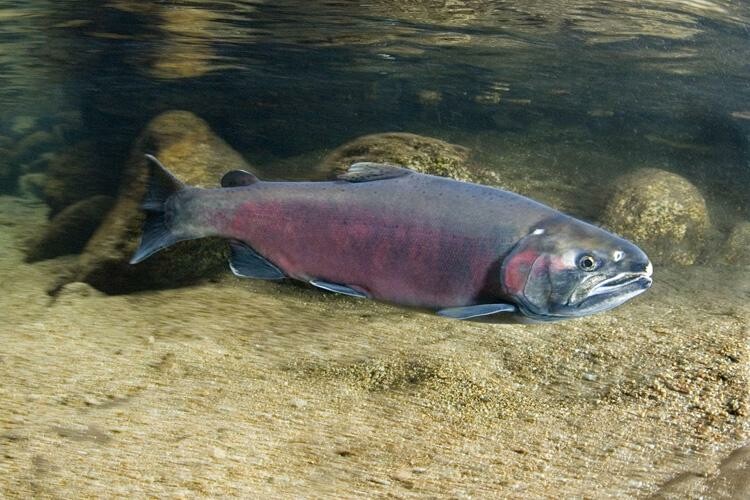Following the unsuccessful chinook and chum salmon runs, a multitude of coho salmon have made their way to the Kuskokwim River. However, there is no one available to harvest them, except for a lone commercial fisherman who possesses the required permits to operate as a catcher-processor.
The once-lucrative gillnet fisheries on the Kuskokwim River and its hub community of Bethel have come and gone – at least until chinook and chum runs rebound.
Fran Reich, a gillnet fisherman on the river for nearly five decades, drifts the river then sells his catch of cohos locally.
In its heyday, during the mid-1980s to the early 1990s, commercial landings on the river in some years hit in the neighborhood of 600,000 chums, more than 50,000 chinooks and almost 1 million cohos. Ex-vessel revenues for the Kuskokwim Management Area, which included some waters in the Bering Sea hit a high of $12. 7 million, and more than 800 commercial permit holders participated in the fishery.
Salmon abundance hit a slump, then rebounded around 2000, but weak markets, primarily for chums reduced commercial effort among permit holders, and some years only one or two processors registered to buy fish in the area. Ex-vessel prices those years hovered around 50 cents per pound for all species.
According to more recent data logged from sonar surveillance with the Alaska Department of Fish and Game, chinook counts have fallen from a high of around 146,000 in 2022 to around 78,000 this year, forcing continued closures to commercial and subsistence fishing until abundance improves. Likewise, chum salmon returns have fallen from more than 550,000 in 2018 to around 40,000 this year.
Cohos, meanwhile, have been on an upswing from around 166,000 passing the sonar in 2020 to 237,000 in 2021 and 161,500 last year. In 2023, the sonar counted nearly 298,000 as of August 17. Escapement past the sonar counters in a single day hit a high of 21,390 fish on August 17.
“It’s the biggest run since 2014,” says Nick Smith, an area management biologist with ADF&G in Anchorage. “It’s going to be a good silver year.”
Smith adds that a sizable portion of the run is expected to show up near the end of the month but that the run won’t likely double in numbers by the end of the commercial season which ends by regulation on Sept. 1.







